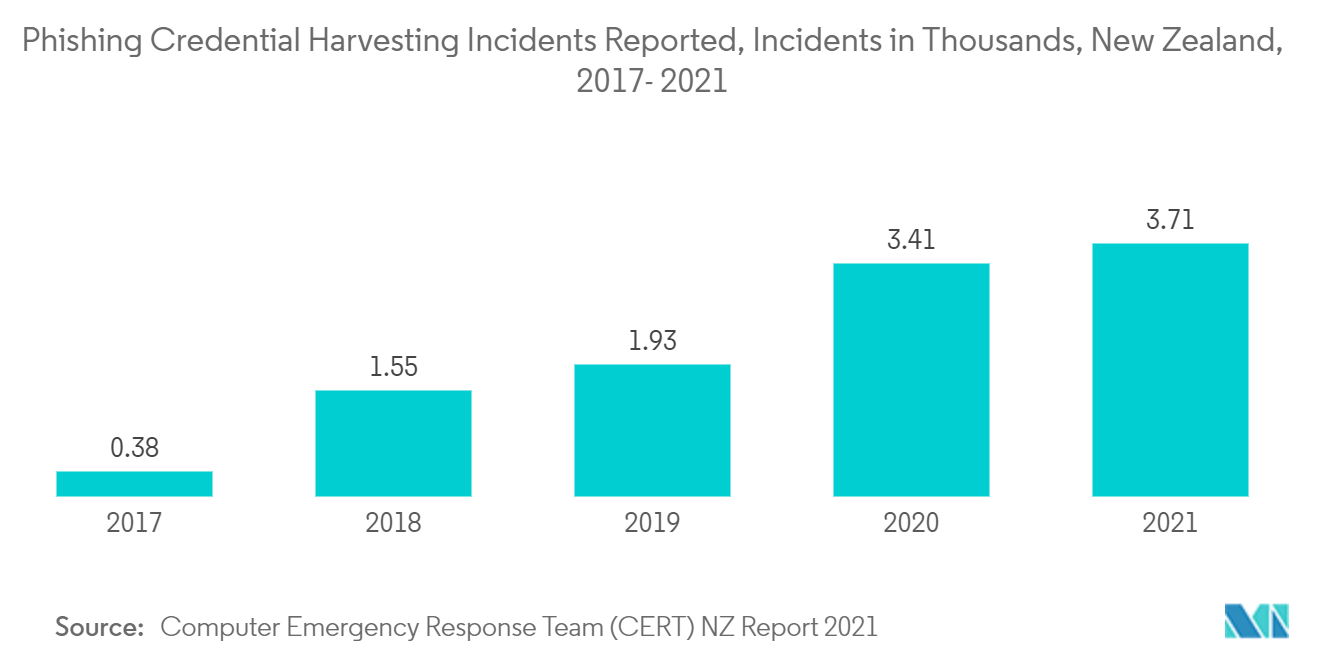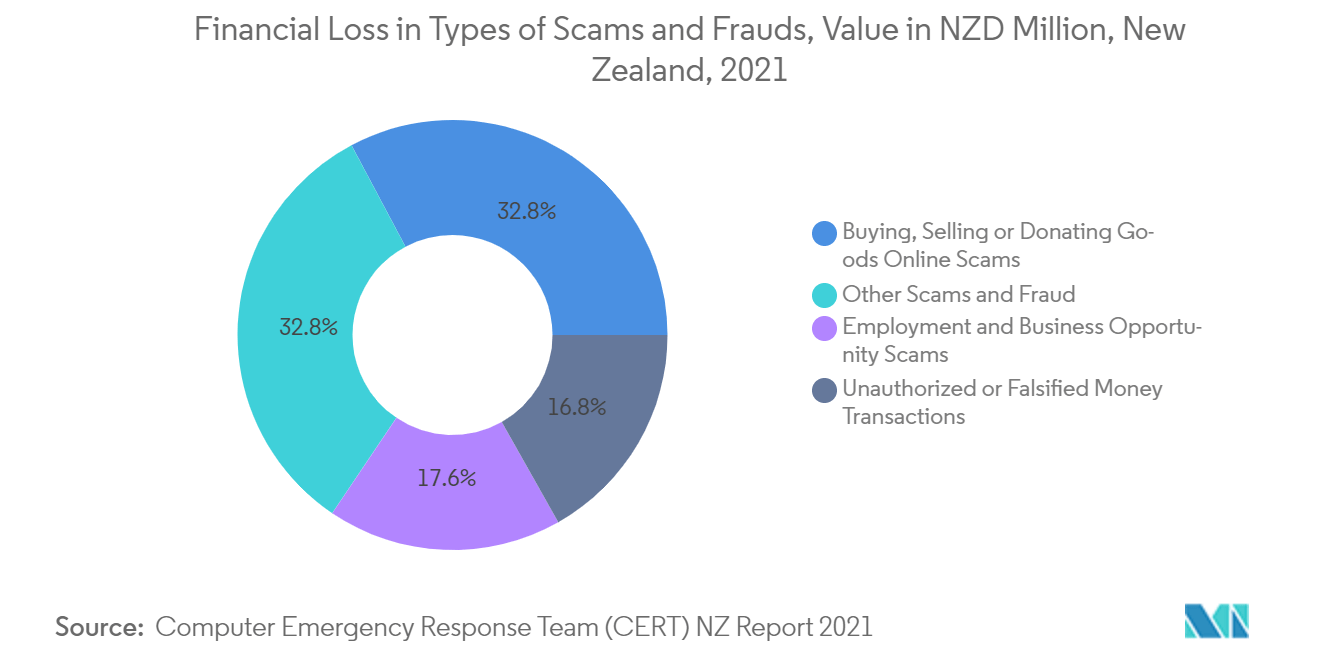Market Trends of New Zealand Cybersecurity Industry
This section covers the major market trends shaping the New Zealand Cybersecurity Market according to our research experts:
Increasing Phishing Risks among Businesses Drives the Cybersecurity Market
- According to the country's cybersecurity organization Computer Emergency Response Team (CERT) NZ, phishing accounts for over 71% of all reports of cyber scams in New Zealand. In the first quarter of 2022, CERT NZ received 1,935 reports from individuals who had been the target of scams, 1,370 phishing-related.
- Phishing is a fraud technique when an attacker poses as a reliable or respectable entity to persuade a victim to disclose personal information or access their electronic networks. Director of CERT NZ Rob Pope advises anybody who has fallen victim to a scam to report it as quickly as possible.
- As a result of the increased frequency of phishing attempts in the nation, CERT NZ, Consumer Protection, the Department of Internal Affairs (DIA), and a number of significant banks have teamed together to alert Kiwis to fresh dangers from con artists. The names of these financial institutions include ANZ, ASB, Co-operative, Heartland, HSBC, ICBC, Kiwibank, Rabobank, TSB, and Westpac.
- Phishing has been around for years, but we have seen that these cyber criminals' methods and strategies have changed with time, according to Rob Pope, director of CERT NZ. He said that in order to trick New Zealanders, who are notably trustworthy, they used social engineering techniques, including playing on their concerns, opportunities, and urgency. He stated that this appears to be the main tendency.
- According to CERT NZ Report 2021, the top three incident categories in 2021 include 1,930 malware reports, up 24% from 2020; 1,897 scams and fraud reports, down 1% from 2020; and 3,709 phishing and credential harvesting reports, up 9% from 2020.

Scams about Buying, Selling or Donating Goods Online Account for Significant Share in Scams and Fraud Financial Losses.
- According to CERT New Zealand, out of 2333 incidents that occurred during the first three months of the year 2022, more than 500 complaints were related to fraud and scams. Michelle, who manages a 16,000-member Facebook group that attempts to expose fraudsters, claimed that the issue is much worse than anybody in authority realizes.
- The total number of cyber events reported to CERT NZ has reduced back to an average level in the quarter of 2022, following a significant increase at the end of the last year, 2021. Still, the number of scam and fraud complaints has stayed constant during the previous three months of 2022 at roughly 550.
- James Taylor, who appears to reside in Tauranga, registered the domain name topoftscontainers.co.nz for a new website in March 2022. He provided a fake phone number. The website took advantage of Ross and Viv's business address and name. The website lists a South Island phone number that connects to an answering machine. The last individual to contact had spent NZD 37,000 and hasn't been able to get a response from them, Viv adds. Sadly, this website has had customers buy containers.
- According to official research released by the Ministry of Business, Innovation and Employment (MBIE), New Zealand generates at least NZD 1.35 billion annually in income used to launder money. Importantly, authorities are unaware of the amount that international fraudsters using New Zealand-registered firms funnel into or through the nation.
- The entire financial loss recorded in 2021 was over NZD 11.9 million (71%), and this loss was due to scams and fraud. Of that loss, nearly NZD 3.9 million was lost to fraud when purchasing, selling, or donating goods online; over NZD 2.1 million was lost to fraud involving offers of employment and business opportunities; over NZD 2 million was lost to unauthorized or forged financial transactions, and NZD 3.9 million was lost to additional fraud and scams.


